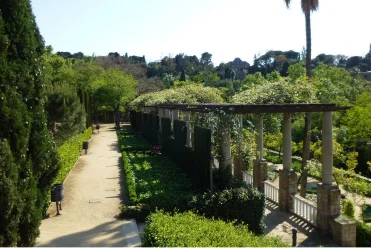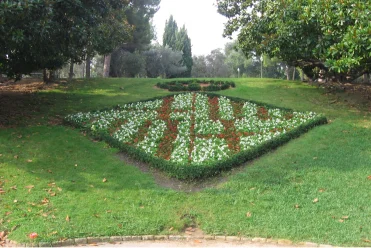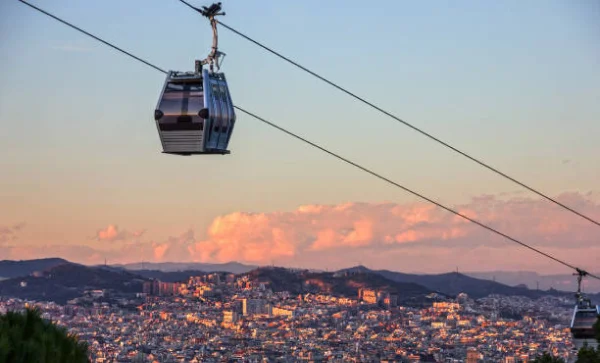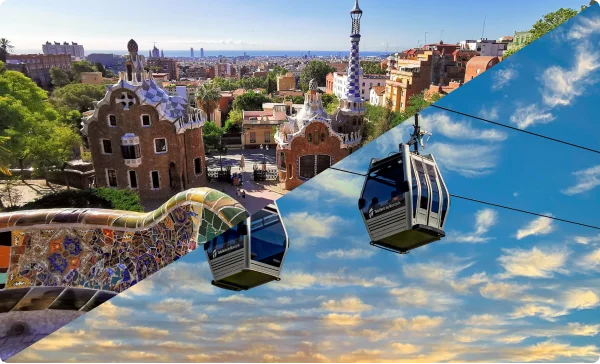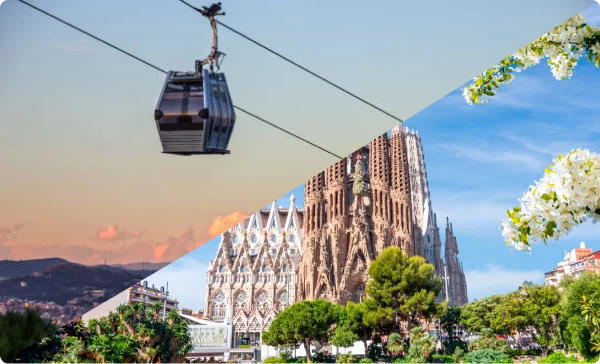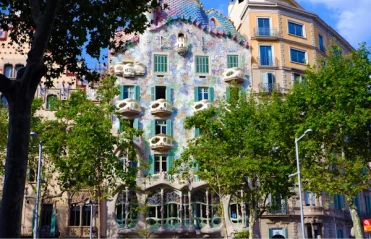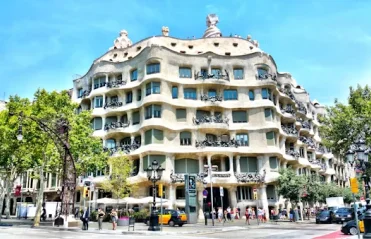What is inside Barcelona's Montjuïc Hill
Montjuïc in Barcelona is a vibrant hilltop area offering a rich blend of history, culture, and nature. Originally developed for the 1929 International Exposition, it has since become a hub for visitors seeking to explore its many attractions. From the iconic Montjuïc Castle to the impressive MNAC (Museu Nacional d’Art de Catalunya), Montjuïc showcases Barcelona’s cultural heritage.
Wander through its beautiful gardens, such as the Joan Brossa Gardens or the Mirador de l’Alcalde, and take in breathtaking views of the city and coastline. Montjuïc is a must-visit for anyone looking to experience Barcelona’s historical landmarks, stunning viewpoints, and peaceful nature spots.
Learn more about what you can see and do in Montjuïc!
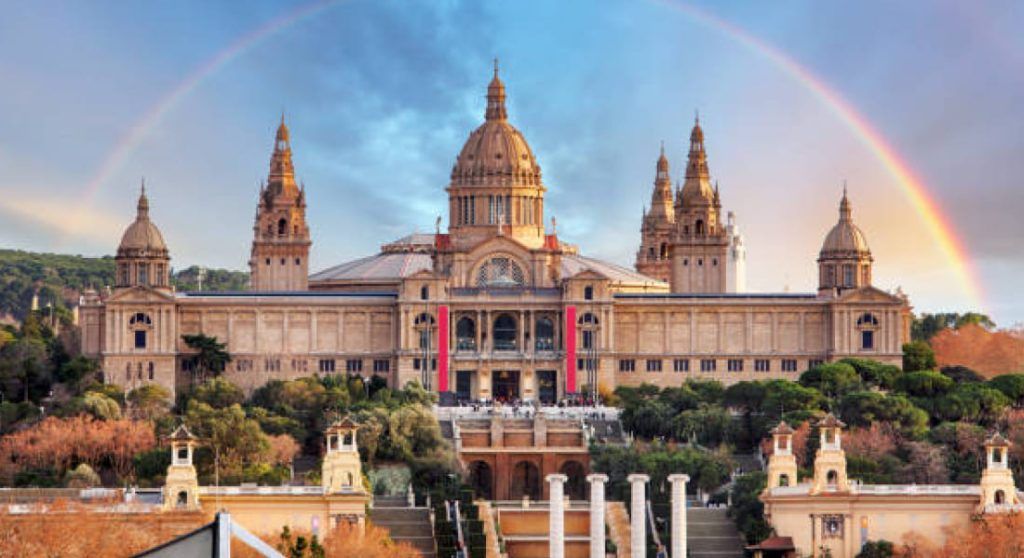
Things to see on Montjuïc Hill
Montjuïc is a captivating hill in Barcelona, renowned for its rich cultural heritage and stunning landscapes. The area is divided into several key zones, each offering unique attractions. Top Montjuïc activities include a scenic ride on the Montjuïc Cable Car, offering panoramic views and access to Montjuïc Castle, and exploring the charming Poble Espanyol, an open-air museum of traditional Spanish architecture. Cultural highlights include the MNAC and Joan Miró Foundation, both showcasing impressive art collections. Visitors can also enjoy the serene Joan Brossa Gardens and the 1992 Olympic sites, such as the Olympic Stadium and Palau Sant Jordi.
Top Montjuïc Activities
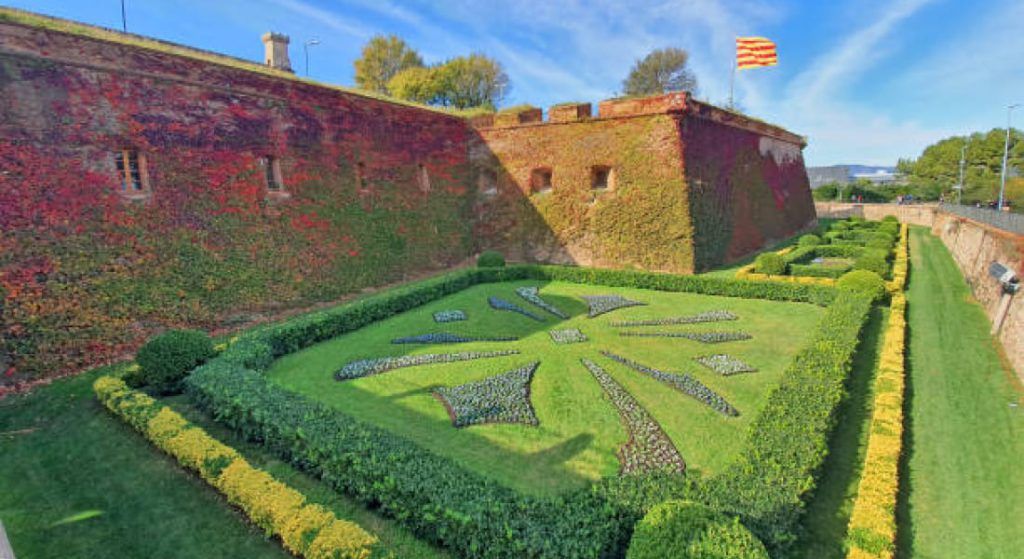
Castle of Montjuïc
Perched atop Montjuïc Hill, the Castle of Montjuïc is a historical gem and a must-see attraction in Barcelona’s Montjuïc area. Built in 1640, this ancient fortress played a crucial role in the city’s defense throughout its history. Revel in the breathtaking city views, stretching from the Mediterranean coastline to the urban landscape below. The castle offers a blend of cultural enrichment, scenic beauty, and captivating experiences. Nearby gardens provide pleasant spots for relaxing amidst nature’s splendor.
Reason to Visit: The castle’s rich history and stunning panoramic views make it a captivating destination for history enthusiasts and casual visitors alike.
Highlights: Explore the ancient fortress, enjoy interactive shows for families, and capture magical sunset moments over Barcelona.
Tip: Don’t forget to bring a camera to capture the breathtaking views and the castle’s unique architecture.
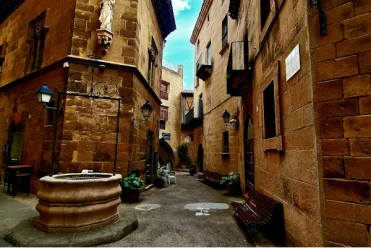
Poble Espanyol
Located in the heart of the Montjuïc district, Poble Espanyol, or the Spanish Village, is one of the city’s most popular tourist attractions, originally constructed for the 1929 Barcelona International Exhibition. This architectural wonder stands as a tribute to Spain’s rich cultural diversity, showcasing reproductions of structures and public spaces from various regions.
Reason to Visit: Poble Espanyol offers a unique opportunity to experience the architectural beauty and cultural diversity of Spain all in one place.
Highlights: Wander through quaint passageways, enjoy artisan demonstrations, and savor culinary delights at the many restaurants and tapas bars.
Tip: Check the events calendar for traditional performances and festivals that showcase Spain’s vibrant culture.

Magic Fountain of Montjuïc
Located at the foot of Montjuïc Hill in Barcelona, the Magic Fountain of Montjuïc was built for the 1929 Barcelona International Exposition and is renowned for its spectacular shows that combine light, music, and water acrobatics. As the sun sets, the fountain transforms into a mesmerizing display of color and synchronized movements.
Reason to Visit: The Magic Fountain provides a breathtaking spectacle that combines art and technology, making it a favorite for both locals and tourists.
Highlights: Experience the enchanting performances that create a captivating atmosphere, perfect for visitors of all ages.
Tip: Arrive early to secure a good viewing spot, especially during peak tourist seasons.
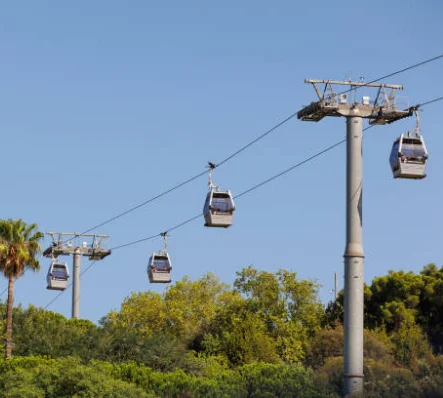
The Montjuïc Cable Car
The Montjuïc Cable Car offers a scenic ride to the top of Montjuïc Hill, providing panoramic views of Barcelona and its coastline. As you ascend, you’ll enjoy breathtaking vistas of the city, and at the summit, the historic Montjuïc Castle awaits.
Reason to Visit: The cable car delivers a unique perspective of Barcelona, blending urban and natural beauty, making it a must-see attraction.
Highlights: Enjoy uninterrupted views, explore Montjuïc Castle, and capture stunning photos from the hilltop.
Tip: Book tickets in advance to avoid queues, and visit during off-peak hours for a quieter experience.
Top Montjuïc Museums
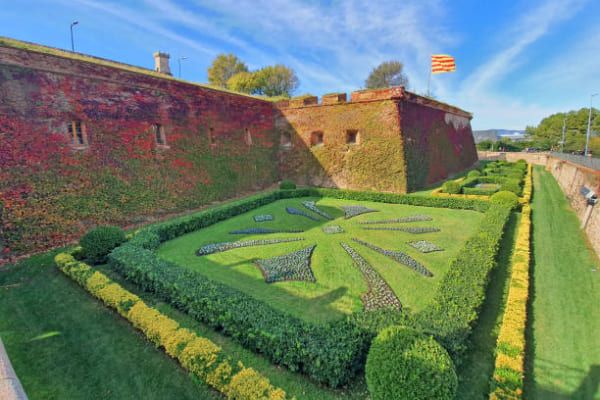
MNAC (Museu Nacional d’Art de Catalunya)
Looking for a cultural treasure? Explore the MNAC, located atop Montjuïc Hill, which was established in 1934 and showcases a sizable collection of Catalan artwork that spans centuries. With displays covering Romanesque, Gothic, Renaissance, and Baroque periods, the museum offers a comprehensive look at Catalonia’s artistic evolution.
Reason to Visit: MNAC is a must-visit for art and history lovers, providing insight into Catalonia’s rich cultural heritage.
Highlights: Admire masterpieces, including stunning frescoes and intricate Gothic altarpieces, while enjoying panoramic views of Barcelona from the museum.
Tip: Allocate enough time to explore both the permanent collection and temporary exhibitions for a fuller experience.

Joan Miró Foundation
A haven for art enthusiasts, the Joan Miró Foundation, founded in 1975, invites visitors to delve into the creative brilliance of one of Spain’s most renowned artists, Joan Miró. The foundation’s mesmerizing exhibits showcase Miró’s abstract masterpieces, sculptures, and graphic artworks.
Reason to Visit: This foundation provides an intimate look at Miró’s innovative techniques and artistic evolution, appealing to those passionate about modern art.
Highlights: Explore rotating exhibitions and enjoy the serene outdoor space adorned with Miró’s sculptures, offering a tranquil setting for reflection.
Tip: Check for workshops and events that allow you to engage more deeply with Miró’s artistic legacy.

The Mies Van Der Rohe Pavilion
A symbol of modernist architecture, the Mies van der Rohe Pavilion was built for the 1929 Barcelona International Exposition. Designed by renowned architect Ludwig Mies van der Rohe, the structure is celebrated for its minimalism, clean lines, and use of innovative materials like glass, steel, and marble.
Reason to Visit: This architectural masterpiece offers an iconic example of modern design, perfect for those interested in architecture and minimalist aesthetics.
Highlights: Admire the pavilion’s open layout, sleek reflection pool, and the famous Barcelona Chair.
Tip: Visit early to enjoy a peaceful atmosphere and take in the serene surroundings.
The 1992 Barcelona Olympics at Montjuïc hill
Tickets for Montjuïc Attractions
Combo: Sagrada Família and Montjuïc Cable Car Ticket
Faqs about the attractions of Montjuïc
Montjuïc features several attractions, including the Montjuïc Cable Car, Montjuïc Castle, the Magic Fountain, Poble Espanyol, and various museums like the Museu Nacional d’Art de Catalunya (MNAC) and the Joan Miró Foundation.
You can reach Montjuïc by public transport, including the funicular, bus, or by walking from Plaça d’Espanya. The Montjuïc Cable Car also provides a scenic route to the top.
Some attractions, like Montjuïc Castle and Poble Espanyol, have admission fees, while others, such as the gardens and the Magic Fountain, are free to visit.
Opening hours vary by attraction. For example, the Montjuïc Cable Car typically operates from 10 AM to 6 PM, while the Magic Fountain has specific showtimes in the evening.
Yes, many attractions are within walking distance of each other. However, some areas may have steep paths, so wear comfortable shoes.
Yes, there are several free and paid parking options near attractions on Montjuïc, including Tarongers and Calatrava parking areas.
Yes, you can bring food and drinks to enjoy in the gardens and parks. However, be mindful of designated eating areas and dispose of trash properly.
Most major attractions have accessible entrances and facilities. However, some areas may have steep paths, so it’s advisable to check ahead for specific accessibility information.
Montjuïc hosts various cultural events, including concerts at the Palau Sant Jordi, performances at the Teatre Grec, and exhibitions at museums throughout the year.
Montjuïc was the main site for the 1992 Summer Olympics, featuring key venues like the Olympic Stadium and the Torre de Calatrava, which are significant landmarks today.
Wear comfortable clothing and shoes suitable for walking. Depending on the season, bring layers for cooler temperatures, especially in the evenings.
Other things to do in Barcelona

